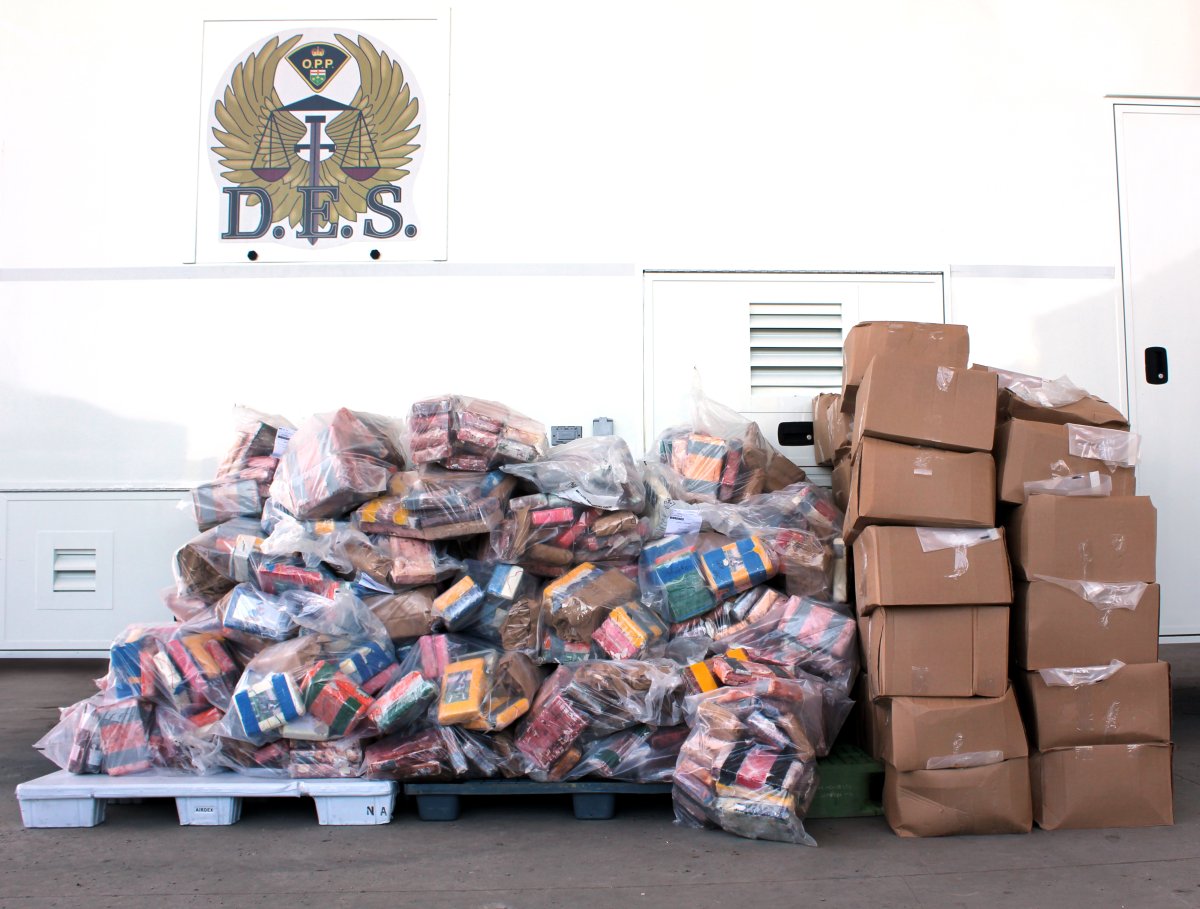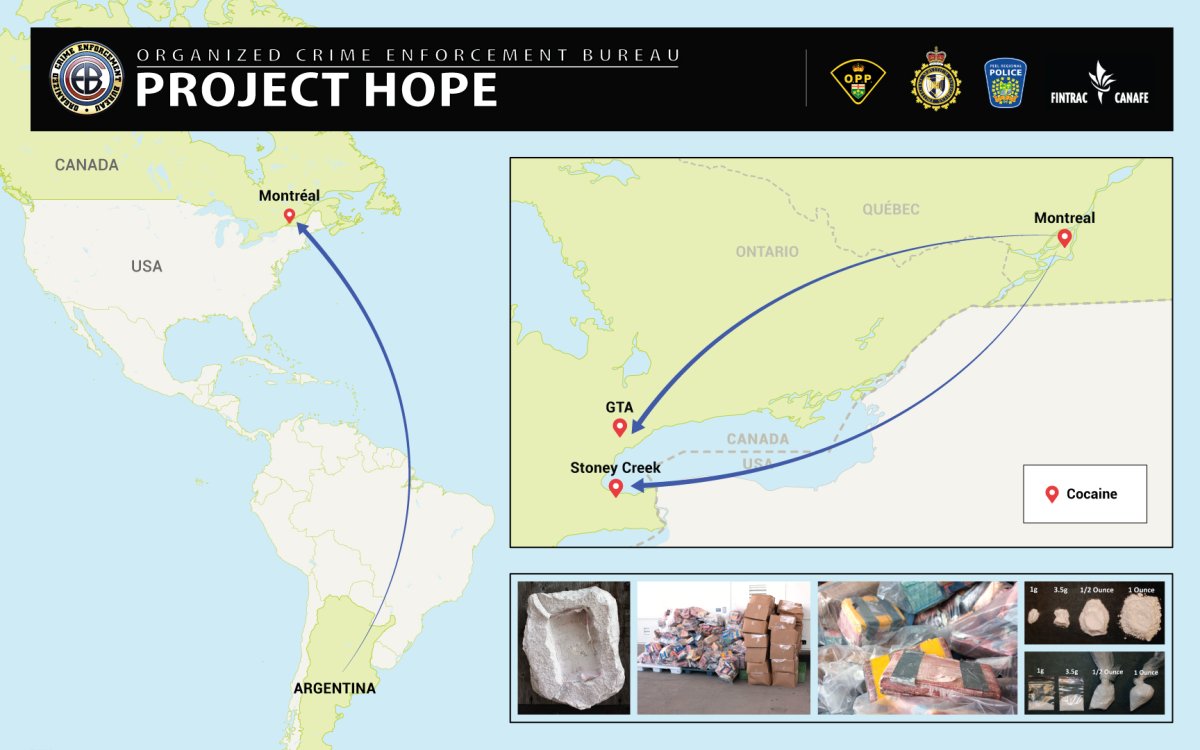A wall of cocaine was put on display as the largest drug seizure in Ontario history was announced at Ontario Provincial Police (OPP) headquarters on Monday.

With an estimated street value of $250 million, police said the investigation – nicknamed Project Hope – netted 1,062 kilograms of pure cocaine.
“With the amount of pure cocaine seized during Project HOPE, we’ve stopped many criminals from causing more harm to our communities while removing a quarter of a billion dollars from the criminal economy,” OPP Commissioner J.V.N. Hawkes said during a press conference on Monday.
READ MORE: OPP bust alleged organized crime ring in Timmins, seize $115K and high-end SUVs
Police said three people were involved in importing the cocaine from Argentina on shipping containers destined for the Port of Montreal for distribution in Ontario and Canada.
Investigators said the cocaine blocks were encased in concrete and found stacked four to five feet high on multiple palettes.
“Inside of the palettes were numerous rocks. A few of the random stones would have cocaine. These stones were put together with cement and the cocaine was sealed inside,” OPP Deputy Commissioner Rick Barnum said.
Photo Gallery:
The investigation, which began in March 2017, led police to the discovery of various caches of cocaine at a Canada Border Services Agency (CBSA) warehouse, at the Port of Montreal and in Stoney Creek, Ontario.
“I can’t really say the source of the cocaine, to where it was actually produced,” Barnum said. “I will say there are definite connections to Mexico and the Mexican cartel.”

Get daily National news
Police said the pure cocaine seized would be broken up and mixed with “cutting agents” or fillers such as fentanyl which has contributed to the deadly opioid crisis in Canada.
READ MORE: 18 charged, $3M in drugs and fentanyl seized in Ontario, Quebec organized crime probe
VIDEO: 3 GTA men charged in massive cocaine bust by OPP
“The distribution and sales cycle would see this cocaine cut many times for street level dealers with untold, dangerous and potentially lethal additives for higher resale value,” Hawkes said.
“As you are well aware, fentanyl is one of those examples during this opioid crisis that we face today and that contributes to filling our morgues every day.”
Police say fentanyl, an opioid about 100 times more toxic than morphine, has been linked to nearly 580 deaths in the province in the past five years.
“Once broken up and cut with cutting agents, or fillers, such as fentanyl, the 1,062 kilograms would yield between 2,122 and 3,183 of product for sale on the streets,” Barnum said.
“What we mean by that, this is 97 per cent pure cocaine. Cocaine generally used on the street by consumers ranges 30 to 40 per cent purity.”
READ MORE: 5 drug overdoses in 2 days linked to bootleg fentanyl in South Eastern Ontario
- Officials offer US$100K for info on Alabama shooting that killed 4
- 4 dead, 17 wounded after shooting in entertainment district in Birmingham, Alabama
- PGA goods worth $25K allegedly stolen from hotel ahead of Presidents Cup
- Kenneth Law responsible for ‘luring’ Ontario teen into suicide death, parents allege
The cocaine seizure resulted in the arrests of three Toronto-area men in May and July.
Luis Enrique Karim-Altamirano, 52, of Vaughan, Mauricio Antonio Medina-Gatica, 26, of Brampton and Iban Orozco-Lomeli, 45, of Toronto, have each been charged with:
- Importation of controlled substance – cocaine
- Possession of controlled substance – cocaine for the purpose of trafficking
- Driving while disqualified
Both Medina-Gatica and Orozco-Lomeli have been released on bail. Karim-Altamirano is scheduled to appear in court on Aug. 30.
Police said their investigation involved the collaboration of multiple law enforcement agencies including the CBSA, Peel Regional Police, the Financial Transactions and Reports Analysis Centre of Canada (FINTRAC) and the United States Drug Enforcement Administration (DEA).




























Comments